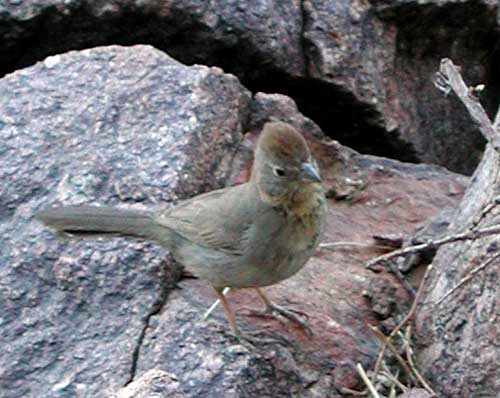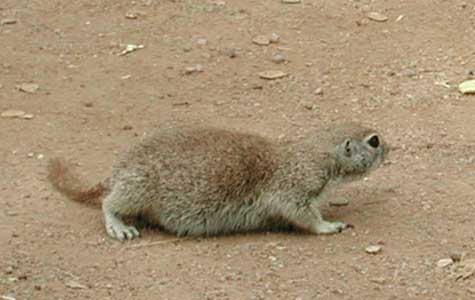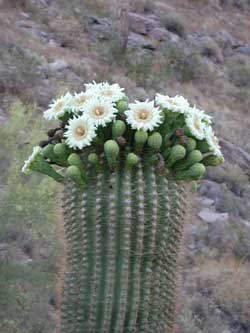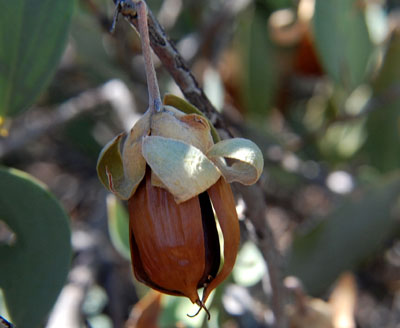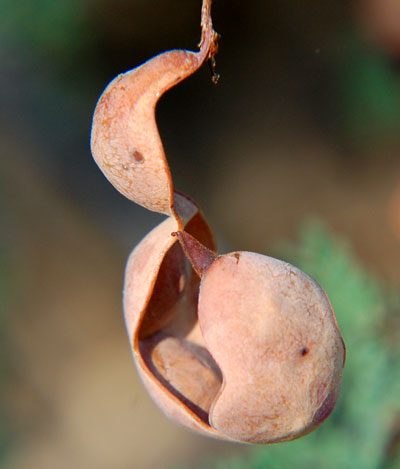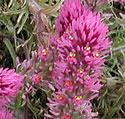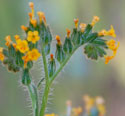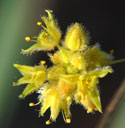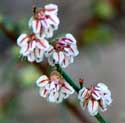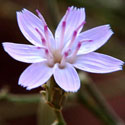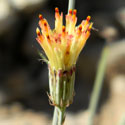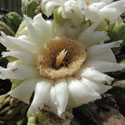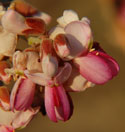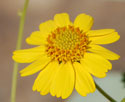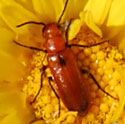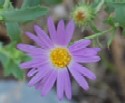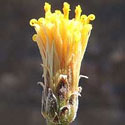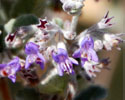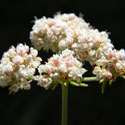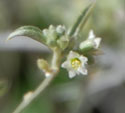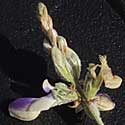Field Trip: June 11, 2011
Today I started from the Overton Trail Head (view larger map for detail) which is just west of the Go John T. H. and returned via the Go John Trail. Distance traveled was a comfortable 5½ km and comfortably cool by finishing before 10am. As expected only a few plants with open flowers were seen (see list below). Foothills Palo Verde were loaded with nearly ripe beans; they will be ready for dispersal as the summer monsoon season begins next month. Seeds of Twinberry and Trixis were already in dispersal mode. Many saguaro cactus are still opening blooms and many others have no flowers or fruit. Ironwood trees also still have open flowers.
A sound of stones slipping down a hillside drew my attention to three Mule Deer, one a yearling and another apparently gravid with a fawn that may be born come August. Later a hefty rock squirrel was on a lookout atop a boulder. Funnel Spiders' webs were conspicuous and numerous along several stretches of trail. Black-throated Sparrows were actively foraging for food and I was surprised to see them extracting seeds from the burrs of Triangle Leaf Bursage. A canyon towhee was pecking hard into a green saguaro fruit. Two pairs of ash-throated flycatchers were tending nests in saguaro nest-holes.
The trails were in good repair and easy to walk along. The park staff should be commended for work well done: (37019 N. Lava Lane, Phoenix, AZ 85027-8862; Phone: 623 465-0431).
Field Trip: Nov. 25, 2000
Go John Trail, loops 9.3 km from the trail head. Clear, sunny and pleasant temperatures resulted in overflow parking at the trailhead. None of the squirrel species were out and about although their tunneling beneath shrubs was evident. Side-blotched Lizards seen sunning themselves on dark boulders were the only reptile. The geology along this trail is almost entirely of ancient, heavily layered and eroded schist and gneiss. It is strongly layered and has been upended so that the layers are nearly vertical throughout, testimony to past tectonic activity. The weathered ends of these upended blocks are shattering into flaky gravel and the exposed ends offer good moisture penetration and host abundant selaginela, mosses, lichens and soil crust organisms.
A fresh carpet of annuals had taken root, mostly growing close to the ground. They will hold out until the danger of severe frost has passed, and, hopefully, more winter rains have fallen. Bluedicks, a lovely species of desert lily, have shot their reddish green leaves up to catch sunlight; they were abundant everywhere I walked. Mosses, lichens and living soil crusts were growing fairly well although the three weeks of dry weather has dried out the Selaginela (desert spike moss).
Sponsored Links
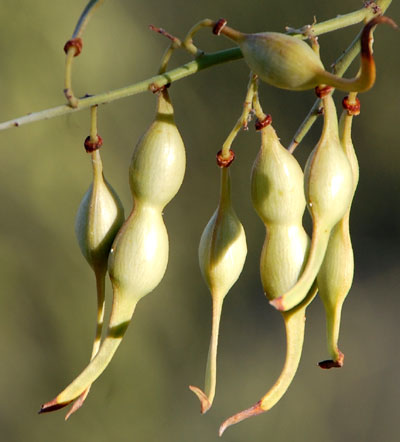
Nearly mature seed pods of Foothill Palo Verde observed at Cave Creek Park n. of Phoenix, Arizona, USA. 11 June 2011
